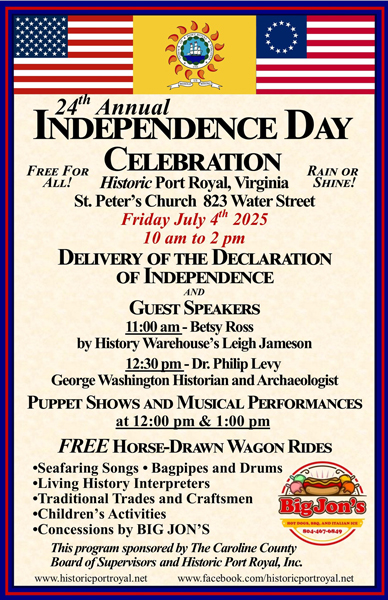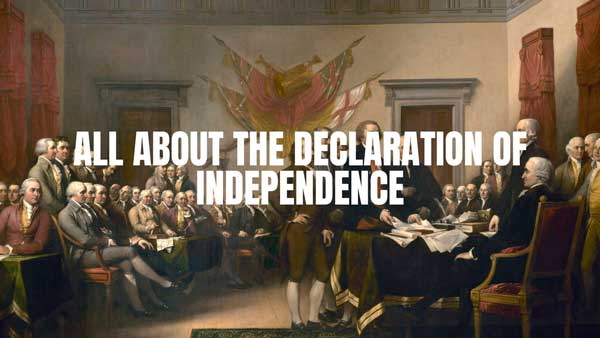Click here to view in a new window.
 Ben Hicks
Ben Hicks
Sunday Links, Pentecost 4, July 6, 2025
Recent Articles, Pentecost 4, July 6, 2025

“July 4 at St. Peter’s”
 Pentecost 4
Pentecost 4
Lectionary Pentecost 4, Year C
Commentary Pentecost 4 Proper 9, Year C
Visual Lectionary Pentecost 4
The Gospel in July, 2025
Introduction to Galatians
A Weekful of Saints
July 4 at St. Peter’s
July 4, the history
A Prayer for Change
Here and There on the Web
Anything but Ordinary! Ordinary Time
Green is for growth in Ordinary Time
The Gospel in July, 2025
This month Jesus continues his trek towards Jerusalem. In the meantime he sends out 72 disciples on July 6. Most of the month concerns his meetings with various people whose actions lead to his teachings. Note that he does not teach in a formal setting, such as a synagogue but where the people are. He is tested by a lawyer, which transitions to the Good Samaritan story on July 13. He is in the home of Mary and Martha on July 20 for a lesson in priorities. Prayer is featured on July 27.
July 6 – Fourth Sunday After Pentecost -Luke 10:1-11, 16-20
Today’s readings focus on the Christian experience of being sent by Jesus to continue his mission.
Jesus sent out seventy-two disciples to spread the Good News and continue the work Jesus had begun. They had not yet experienced the Good News of the resurrection, but following Jesus, they proclaimed that the Kingdom of God was at hand and healed the sick. Jesus had them pack light, taking only peace with them. Whatever town they entered and whatever home, they were to greet the people with peace, even if the people did not want to hear what they had to say. When the seventy-two returned, they were most pleased by the fact that they had power over evil forces. Jesus told them not to think so much about that as the fact that they had already been assured of salvation.
Pentecost 4 Proper 9, Year C
I. Theme – God’s Call and Response to us, being sent out on mission

"Harvesting"- Jorg Breu (1500)
The lectionary readings are here or individually:
First Reading – Isaiah 66:10-14
Psalm – Psalm 66:1-8
Epistle – Galatians 6:(1-6)7-16
Gospel – Luke 10:1-11, 16-20
Today’s readings focus on the Christian experience of being sent by Jesus to continue his mission. This Sunday’s lectionary readings reflect on God’s call and our response, and how this affects the shape of grace and healing in our lives.
Isaiah speaks words of peace and hope for God’s people because God’s love never fails. Paul closes his letter to the Galatians with some final counsel on behavior within the Christian community. Luke tells of the mission of the 70 disciples and their success in defeating Satan.
How do we live out God’s faithfulness in our lives? How do we witness to others? When we read of the message to the seventy, Jesus is not calling them out to condemn and cause fear but instead to heal and proclaim Good News. God has brought Good News through Jesus Christ, but it is human beings who have drawn the dividing lines. It is human beings who will not receive the message of peace, who turn away from God’s love, who restrict and condemn others. God desires restoration, healing, and forgiveness, and offers us new life, if we choose to accept
Transformation emerges through a dynamic process of divine-human call and response. Our openness and efforts make a difference to the quality and extent of God’s presence in our lives. As scripture says, Christ is always standing at the door, knocking and seeking our attention and partnership in the quest for planetary and personal wholeness. Whether and how we the open the door to God’s graceful, intimate, and visionary energy can make all the difference in the world.
The central message this week is simple but significant – do not despise the saving power of small things. God’s commitment to justice, restoration and healing is proclaimed strongly through the Psalms and Isaiah’s song, but the way God’s saving work comes into being is often through small, ordinary people and actions
The picture of God’s care and comfort in Isaiah is that of an ordinary, familiar domestic scene – a child being nursed by its mother. Galatians speaks about the work of following Christ in the every day terms of our relationships with one another (correcting each other and sharing burdens), taking responsibility and doing good for all. And Jesus sends his disciples out to share the message of God’s reign, while accepting hospitality along the way – a very ordinary practice for travelers. Even when they celebrate overcoming demons, Jesus downplays it.
The power of the church to bring wholeness to society is in the grace, kindness and mutual encouragement that comes form living as the letter to the Galatians instructs. And, in every individual, the willingness to receive God’s grace and healing through ordinary means frees us to become channels. Our impact is often less about how we structure our services or what kind of music we use or how “prominent” we are in our community. Often it is in the quiet work of nurturing care and service within our community, and in doing the slow, transformative work of growing into caring, serving Christ-followers in our homes, workplaces and sports clubs (as Galatians calls us) that ultimately determines how effective our ministry is.
When, instead of pointing fingers at “the world” we are willing to accept its “hospitality” speaking blessing, and offering grace and mercy and justice in every situation and with every person (as the disciples were called to do), then people begin coming to us to learn more about our faith and the One we follow. But, if we fail to do this, then no amount of words or programs will be enough to compensate for our lack of grace and goodness. It’s significant that, even when the disciples were told to “shake the dust off their feet” when they were not received in a village, they were, nevertheless instructed to tell the people that God’s Reign had come to them. It was not that they were “judging” the people, so much as using a graphic and powerful image to challenge them about what they had rejected. God’s love and grace remained available to the people. In the same way, we can confront the small injustices in our communities, while still offering grace. And, in the end, what is important is not the dramatic confrontations, but the people whose names are “written in heaven” – who have discovered life in the dream of God.
In practical terms, this move toward “ordinary justice” has very significant implications. If we are to reverse the impact of climate change, it will take small but significant shifts in the habits of many ordinary people. If our world is to become more peaceful, it will mean ordinary people must learn to understand and respect one another, recognizing our common humanity. If wealth is to be equitably distributed, it will mean changing the values by which ordinary individuals live from consumerism to simplicity and from accumulating to giving. If these shifts were just taken seriously by Christ-followers alone, the impact would be nothing short of miraculous. As Christians around the world join together in peace-making, hospitality, taking responsibility for the change we can bring and doing small acts of goodness, the Gospel message is preached clearly and powerfully, with very few words necessary.
The one reading that appears to be out of place is the alternative Psalm (66) – but here the focus is on the Exodus, which, although proclaimed through retelling the miraculous story, is about the very ordinary human longing for liberation and salvation – which is, of course, the essence of the message that Jesus’ disciples would have preached.
Luke- Sending out the Seventy (Gospel July 6, 2025)

This story speaks of the seventy whom Jesus sent out. Working Preacher calls it a kind of “internship,” a training time while Jesus was still with them. This story is a series of instructions by Jesus . Jesus sends out the twelve earlier in the story and gives them instructions about what they are to do (Luke 9:1-6). The mission of the seventy is an extension of the mission of the twelve. One major difference is that this is a mission in Samaria. This is a peace mission among Samaritans who were often hostile to Jews in Galilee and Judea.
Our passage today, unique to Luke, is intimately related both to Jesus’ words in 9:1-6, when he sends out the 12, and 9:51-62 (last week), where he rather harshly dismisses potential followers who have to “take care of things” before they follow Jesus. He possibly was sending out all of his followers in this lesson.
The number seventy is reminiscent of the seventy elders of Moses in Numbers 11:16-17. Just as these seventy men were destined to become the leaders of the Old Testament community, the seventy missionaries/disciples in Luke were destined to become the leaders of the New Testament community. In the Old Testament, the Lord God said that he would “take some of the Spirit that was on Moses and put it on them/the seventy that they could also bear the burden of the people.” In the New Testament, the implication is that the Spirit of Jesus would be transferred to these seventy missionaries/disciples, and that they would be equipped for leadership in the new movement of faith. It is representative of the number of nations in the world.
The urgency of the mission is emphasized. Jesus begins by using an agricultural metaphor. “The harvest is plentiful, but the laborers are few.” The Day of Judgment (harvest) is close at hand so there is a need to look to the Lord to supply a full complement of missioners. In Jesus’ day, people intuitively understood when the fields were ripe for harvesting. Plowing, planting, watering, caring for, weeding are all different activities before harvesting. Harvesting means that the plants are ready to be gathered in or picked off the tree or from the field. Jesus was saying that people were ready to be harvested.
This was certainly true in Jesus’ day: a myriad of people were ready to belong to the kingdom but what was needed were more workers.
The mission was the same as Jesus’ own ministry: “cure the sick” and “say to them, ‘the kingdom of God has come near to you.’”
In any case, Verses 1-11 give us a snap-shot into the life of an itinerant preacher-teacher-healer at the time of Jesus.
Visual Lectionary Vanderbilt, Fourth Sunday after Pentecost, July 6, 2025
Click here to view in a new window.
Green is for Growth in Ordinary Time
Adapted from “Anglican Compass”
The color green is associated in the season of Ordinary Time. It appears in green clergy vestments, in green fabrics on the altar and pulpit, and sometimes in green hangings or other adornments. You might even choose to wear green on occasion (no obligation to do so!).
This green represents growth. Just as we see green in the growing plants of the natural world, green appointments in the church remind us of God’s creation, his gift of food for our flourishing, and his command to numerical and spiritual growth.
The Green in God’s Creation
In nature, green is the universal color of vegetation, including trees, bushes, grass, and all manner of edible crops. Scientifically speaking, plants’ chlorophyll absorbs the blues and reds in the light spectrum, leaving the greens reflected in our sight. Green is not the most common color on earth (that distinction belongs to the blue of waters and skies), but it is the color most associated with growth and the food that growth requires.
Green is the only color named explicitly in the Genesis creation account, where God gives to the animals “every green plant for food,” and likewise gives to man “every plant yielding seed” and “every tree with seed in its fruit” (Genesis 1:29-30).
Moreover, the home God made for man was a garden, which contained “every tree that is pleasant to the sight and good for food” (Genesis 2:9). In other words, God expressly linked the sight of green trees with the expectation of good food.
By analogy, when we see green in the church, it is a sign of the good food we will find there.
The Green in God’s Temple
The analogy between the church and the green garden of Eden is not as far-fetched as it may seem. God has always made a link between his place of worship and the Garden of Eden, both through figural symbolism and the color green.
The Tabernacle and the Temple both featured figural symbolism of plants and fruits, including the lamp stand shaped like an almond tree (Exodus 25:31-34), priestly vestments adorned with pomegranates (Exodus 28:33-34), Temple doors carved with gourds and open flowers (1 Kings 6:18), and all around the walls of the Temple were carvings of palm trees and open flowers (1 Kings 6:29).
Similarly, the design of both the Tabernacle and the Temple referred back to the Garden with strategic use of the color green. This color was achieved not through fabric, but rather through the metal bronze, which oxidizes into a green patina. In the Tabernacle, bronze appeared in many places, but most importantly as the material for the altar (Exodus 27:1-8). Thus, just as in the garden, the color green was linked to the provision of food. Green altar fabrics in churches today make the same association.
The Temple featured bronze in its great pillars at the entrance of the building, complete with capitals engraved with pomegranates and lilies (1 Kings 7:15-22). To someone entering the Temple, it must have felt utterly transporting, the green pillars like glorified trees of a new Eden.
A Prayer for Change
The Women’s Prayer Circle, St. John’s Episcopal Church, North Guilford, developed A Prayer for Change.
Their hope is that as more people and churches use and share it, the prayer creates an energy that will be a force for loving change.
“Loving God, You have made the whole of human life in your image;
“Each one of us shaped in love.
“Your goodness is ever-present within us all.
“But there is so much evil and pain in our world, it comes at us from every direction.
“Teach us how to rediscover Your love within us, to use that love as a force for good.
“Help us to turn our hearts toward the world in hope, praying for each other, regarding each other as treasure.
“Join us all together in prayer, that we might be the light which darkness can never overcome.
Amen
Here and There on the Web

1. Journaling in Ordinary Time
Journaling can provide breadth and depth to spiritual practices. Plus it is helpful for jotting notes about an activity or friend.
2. Good Book Club with the Psalms
Sign up at the above link covering all 150 Psalms. June sessions will be hosted by Forma and July sessions by Forward Movement. Thursdays at 3:00 p.m. June 4-July 31, 2025. Connect with interested people about the Psalms all over the world for stimulating discussions.
3. Try out AI about the Episcopal Church, hosted by the church You can access it any time
4. Silence “Silence isn’t simply the absence of noise it is the delivery of divine presence. Silence is the medicine for the tyranny of anxiety. Silence is a fierce warrior against all falsehood. Silence reveals the connective tissue between us God and all creation. Happy Summer!” Rev. Rob Wright, Diocese of Atlanta 1 Kings 19:1-15″
Sunday Links, Pentecost 3, June 29, 2025


